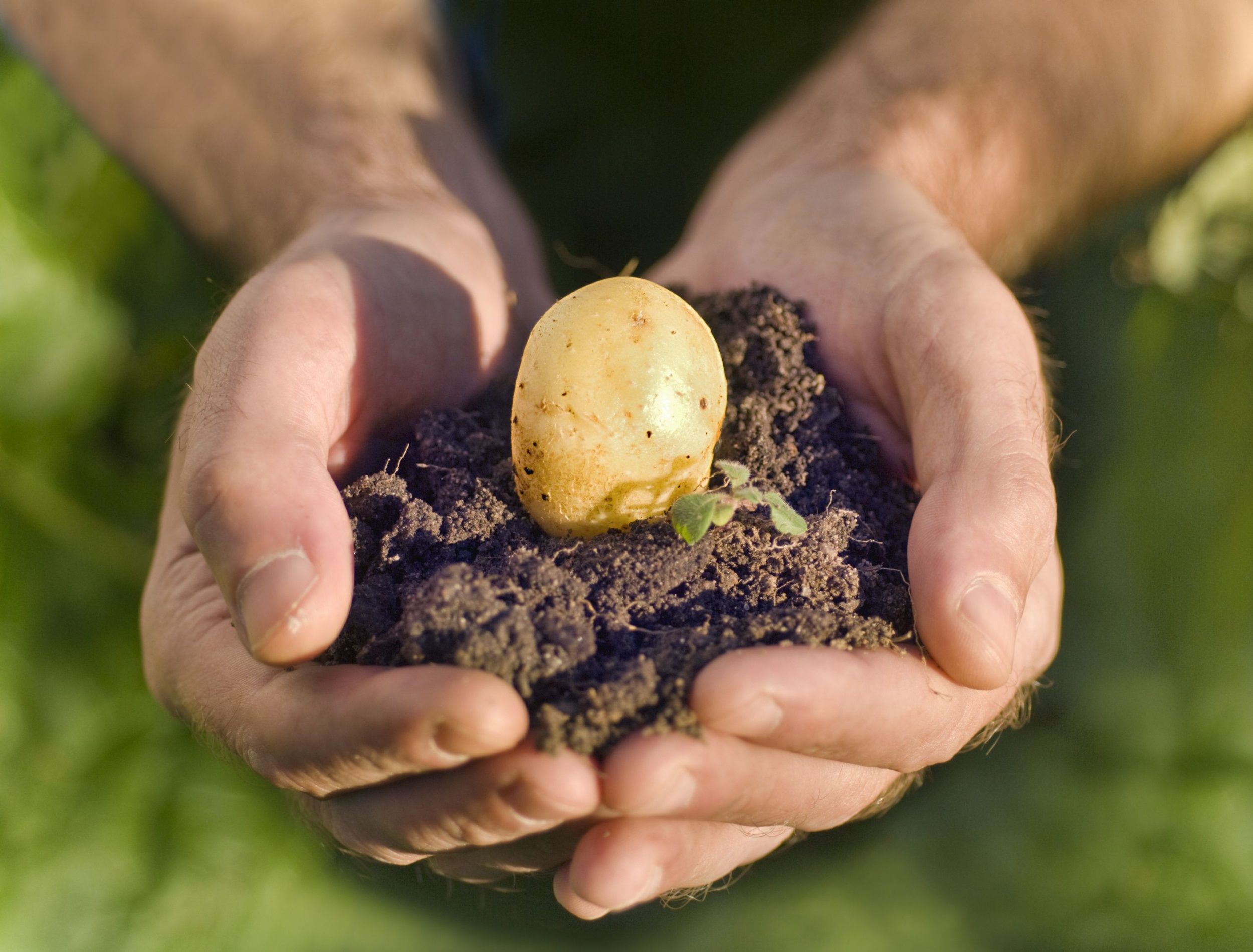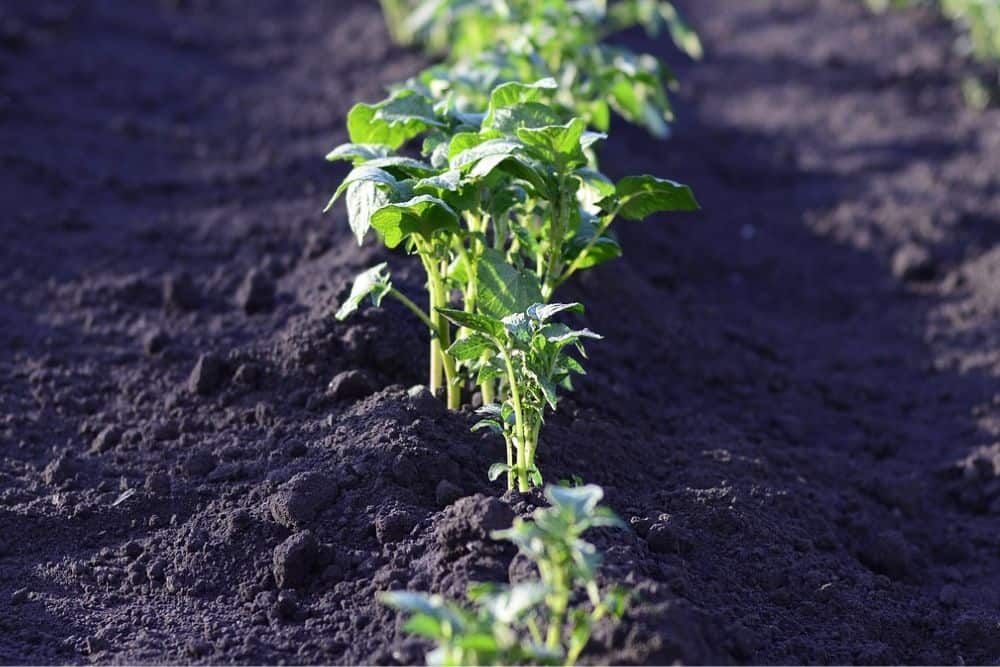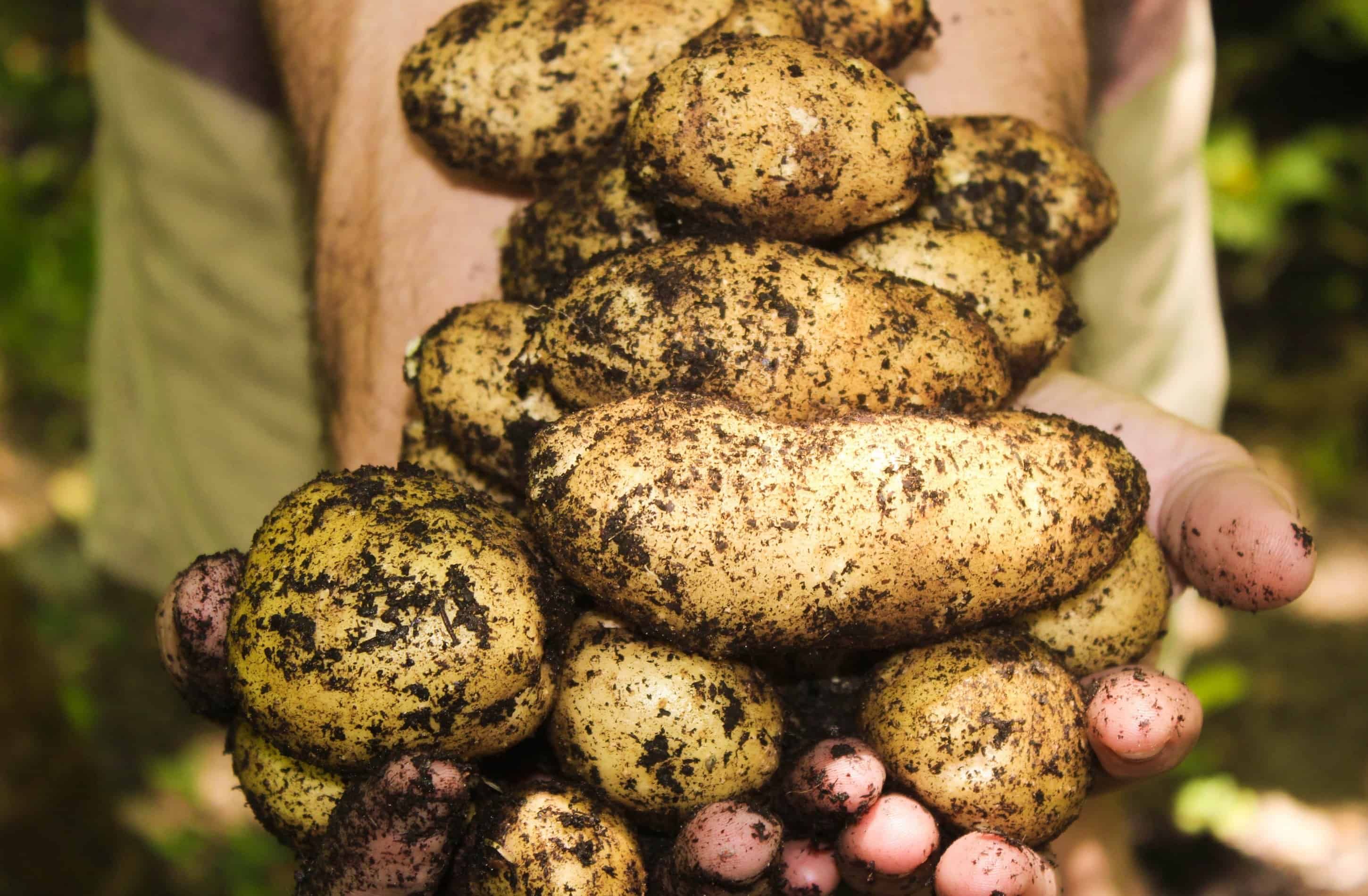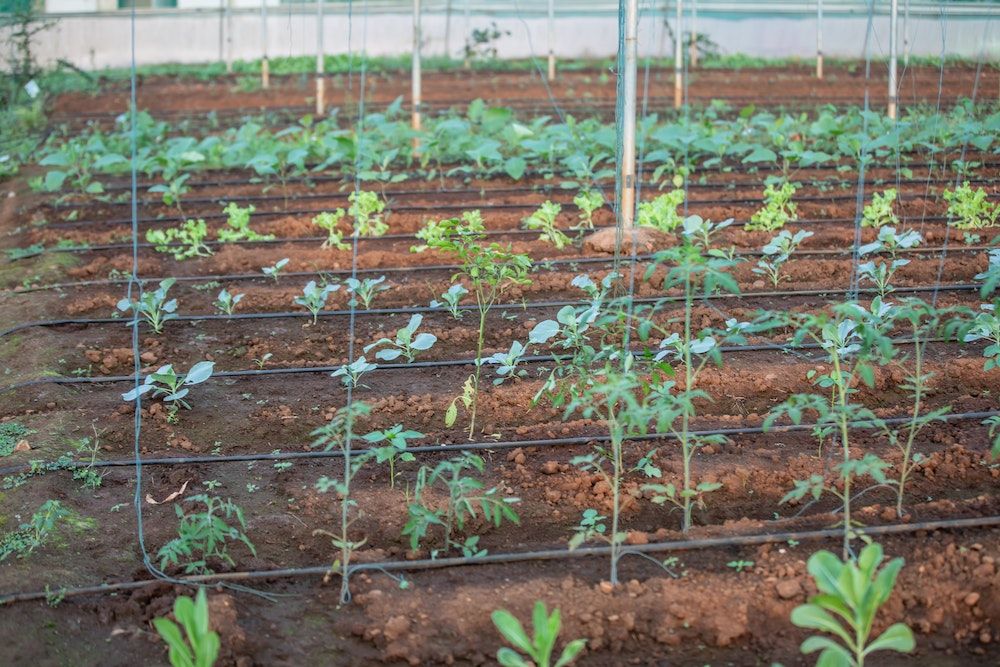Potato plants are a great addition to a vegetable garden, providing delicious potatoes with minimal effort. When it comes to helping potato plants thrive and produce healthy tubers, caring for their water needs is one of the most important things.
Discover more about watering requirements for potato plants and why they are so important!
How Often Should You Water Your Potato Plants?
Image credits: Monika Gniot via Shutterstock
Generally, potatoes need about 1 to 2 inches of water or rainfall per week to thrive. You can achieve this through careful watering, or rainwater harvesting, every three to four days.
Note: Relying on rain to water your potatoes may be counterintuitive. Due to the dense foliage of potato plants, an adequate amount of water may not reach your tubers. This is why it's so important to check the soil frequently (more on that below).
About Soil and Climate Conditions
When it comes to manual watering, the frequency depends on various factors such as soil type and climate conditions. When winter rolls around many plants go dormant and require less water as they aren't actively growing. But, during summer, when temperatures are higher and there is less rainfall, you'll need to water more often than in cooler months with frequent rains.
Concerning soils, for instance, clay soils hold on to moisture better than sandy soils. And soils with amendments such as wood chips, perlite, and peat moss, or soil with a loamy texture will drain more efficiently than silty soil. While potatoes are forgiving of most soil types, aim for a pH between 5.8 and 6.5.
Another factor to consider when watering your potato plants is how much to provide. Overwatering leads to root rot, while underwatering causes your potatoes to split and be underdeveloped. Check the soil moisture before watering, and aim for the soil to remain evenly moist (but not wet) throughout the growing season. If you're unsure how much water is enough, look out for signs of wilting or discoloration on your plants, as these indicate they need more TLC and moisture.
Watering Tips
Image credits: Надежда Мельникова via Pixabay
To provide the best care for your potato plants and ensure the highest yields, water and care for them correctly.
Water Deeply
Potatoes can take some periods of dry weather well. However, if there has been a prolonged period of dryness, check the soil. If it is too dry, it's time to water them. Optimal temperature for good potato growth is between 65 to 80 degrees Fahrenheit in the day and 65 to 80 degrees at night.
When you water your potato plants, moisten the soil around 8 to 10 inches below ground level. This deep watering technique is key to adequate hydration for the plant roots.
Avoid Overwatering
Another important factor when watering your potato plants is to avoid overwatering them. While potatoes love water, they easily become waterlogged if you provide too much.
To avoid this, water your plants only when necessary and monitor their growth carefully after every watering session. Always check the soil before giving your crop a drink. Also, try to water in the early morning so the sun doesn't evaporate all the moisture before it reaches the roots.
Know When to Stop Watering
When it comes to harvesting potatoes, timing is everything -- Keep an eye on the leaves. When it turns yellow and begins to die back, it’s time to stop watering your potato plants. This helps start the curing process for the harvest.
During this special process, the potato skin thickens and becomes more robust, while healing bruises or cuts it may have received during the growing process. Generally speaking, potatoes should be ready for harvest two weeks after you stop watering and 90 days after planting. Ensure that temperatures range from 45 to 60 degrees Fahrenheit and relative humidity is between 85 to 95 percent for optimal curing.
Signs You Need to Increase or Decrease Watering Frequency
Image credits: Pexels via Pixabay
When growing potato plants, pay attention to the leaves. Wilting or brown leaves signal the plant is not getting enough water, and yellowing of the leaves before harvest time indicate too much water. If you spot these signs, adjusting your watering frequency is necessary.
But before changing your watering schedule, inspect the soil first. If the soil is dry, it may be time to increase your watering frequency. On the other hand, if the soil feels cool and wet, it could be a sign that you have been overwatering and need to reduce your watering frequency.
The Benefits of Irrigation Systems for Potatoes
Image credits: Chand Sharma via Pexels
Installing an irrigation system for your potato plants provides many benefits. Irrigation systems enable you to control the amount of water your plants receive, helping you avoid over- or underwatering them and ensuring that they get consistent access to water throughout their growing season. You can even customize your irrigation system to work with your specific climate. For example, if there are rainstorms in the forecast, set the system to not water for that period of time. Doing so allows potatoes to maintain a better quality, yields bigger crops, and reduces the time spent manually watering each plant.
An irrigation system also reduces waste through its efficient use of water compared to manual watering. These systems help ensure that you use the right amount of water, minimizing runoff and preventing overwatering that leads to fungal diseases. Additionally, using an irrigation system reduces water bills and saves you money.
Perhaps most beneficial is that it frees up more time for you as a gardener since manual watering is no longer necessary. Additionally, if you are using a timer on your irrigation system, you don't have to worry about manually turning your system on each day or forgetting to water your plants. An irrigation system saves you time and helps improve your potato plants' health and yields.
Spuds-a-Splashin'
Growing potatoes doesn't have to be difficult when you know how much to water. Whether using a manual or automatic watering system, pay attention to your plants, and they will thank you with large, healthy harvests. So, get out there and do some potato planting! Your successful spud garden is just around the corner!
To ensure success in your potato-growing endeavors, take a few moments to leave a comment below and share this post with family and friends!





